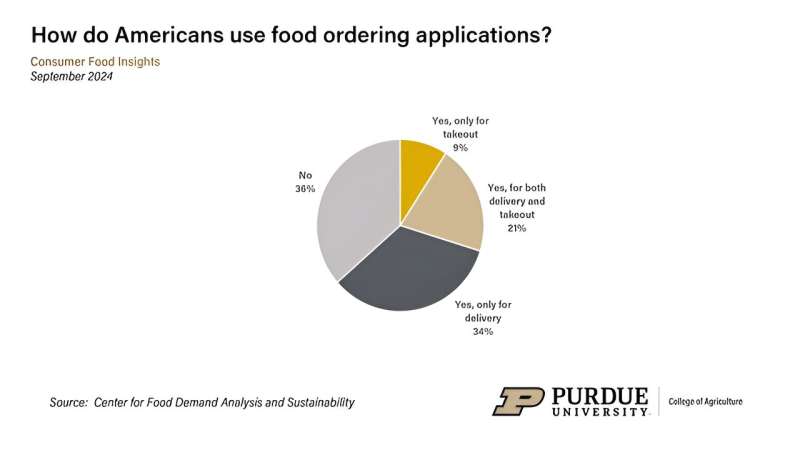The latest Consumer Food Insights Report from Purdue University reveals a significant increase in the usage of food-ordering apps among consumers. The report highlights key trends, including the growing popularity of app-based food delivery, the widespread use of discounts and promo codes, and the impact of higher food prices on consumer spending. This blog post delves into the insights unveiled by the report, offering a comprehensive analysis of the evolving landscape of food consumption and the role of technology in shaping consumer behavior. Mobile apps and food delivery have transformed the way people access and enjoy their meals.

The popularity of food-ordering apps
Two-thirds of Americans have ordered food via an app at least once for takeout, delivery or both in September 2024 Consumer Food Insights Report The change in consumer behavior of the service economy has further intensified with COVID-19.
Led by Joseph Balagtas, a professor of agricultural economics at Purdue University and director of the Center for Food Demand Analysis and Sustainability (CFDAS), the report shows that more than half of consumers have used an app to place a delivery order. By the same token, nearly half of food app users also said they use an app at least once a week to order delivery or takeout. This increase in on-demand delivery signals how much we depend on technology to satisfy our hunger.
The joyless portions of the mindset — discounts and promo codes
The report also explores the financial mood of consumers on ordering food online. An astonishing 68% of consumers claim they use discounts or promo codes at least some of the time when ordering food through apps, simply because its become regular practice for many people. As for budget-conscious spenders, one out of two surveyed uses discounts and promo codes “often” or “always” at times when ordering food via the net.
This is fairly elementary reasoning, as everyone knows that food bought outside of the house costs more than food made in it by one simple reason: groceries. But consumers, especially those on a budget, are looking to capitalize on deals and discounts to balance out the cost of convenience behind an app-based meal delivery order. As Balagtas says, “It’s not a surprise that when people are buying prepared food, they would like to see price reductions — in particular the group of consumers who spend the lowest amount on food.
The Impact of Higher Food Prices on Consumer Spending
The report also highlights the potential effect of increased food prices on consumer spending. This is especially striking since the CFI survey has shown a gentle upwards trend in per-person weekly food expenditures since the inception of the report last January. It also marks a significant jump from where the number was just two months ago — in January, people were spending approximately $72, so those figures represent a 15% increase per person per week.
“Consumers have to make adjustments in their disposable income so they can afford the higher prices to buy the same groceries,” commented Elijah Bryant, a survey research analyst at CFDAS and one of the authors of the report. In other words, shoppers are trying to uphold the same amount of food intake as prices continue up: with inflation still bad on balance in next year’s economy, this looks like a scenario where grocery budgets must be balanced.
It also suggests a strong link between income and food security, as the rate of food insecurity is highest among households that spend less than $50 per person each week on groceries. But this weight is further evidence that resources such as food banks – to aid those who are suffering from food insecurity and poverty – are still necessary.
